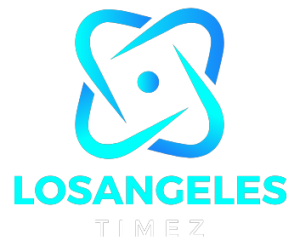What Is The Economic System In The United States
What Is The Economic System In The United States
The United States has a mixed economy. This means it blends elements of both capitalism and socialism.
-
Capitalist aspects:
- Private businesses own most industries and make key decisions about production, pricing, and investment.
- Individuals control resources and capital to a large extent.
- The market plays a major role in allocating resources.
-
Socialist aspects:
- The government plays a significant role in regulating businesses and providing social programs like Social Security and Medicare.
- The government also builds infrastructure and provides some essential services.
So, the U.S. economy leans towards a free market system, but the government intervenes to ensure social welfare and economic stability.
Economic systems are the backbone of any society, dictating how resources are allocated, goods and services are produced, and wealth is distributed. In the United States, the economic system is a complex blend of principles, policies, and practices that have evolved over centuries. Also, read about Did Joe Biden Pass The Bar Exam
Overview of the Economic System in the United States
At its core, the economic system of the United States is rooted in capitalism, where private individuals and businesses own and control the means of production. However, it’s essential to understand the role of government, which influences and regulates economic activity to varying degrees.
Historical Context
The economic system in the United States has its roots in the early colonial period, but it wasn’t until the Industrial Revolution that capitalism began to take shape. The growth of industry, expansion westward, and major events like the Great Depression and World Wars significantly shaped the trajectory of the U.S. economy.
Features of the U.S. Economic System
The U.S. economy is characterized by private ownership of businesses and resources, driven by entrepreneurship and competition. It’s a market-driven economy, where supply and demand determine prices and production levels.
Major Sectors
The U.S. economy is diverse, with major sectors including agriculture, manufacturing, and services. While agriculture and manufacturing have seen declines in employment over the years, the services sector, including finance, healthcare, and technology, has become increasingly dominant.

Labor Market
The U.S. labor market is dynamic, with trends in employment and wages influenced by factors such as technological advancements, globalization, and government policies.
Income Distribution
One of the significant challenges of the U.S. economic system is income inequality, with a sizable wealth gap between the richest and poorest citizens. Social mobility, the ability of individuals to move up or down the socioeconomic ladder, has also become a concern. Discover more about What Does Woke Mean in Politics
Government Intervention
While the U.S. is known for its free-market principles, government intervention is prevalent in areas such as regulation, taxation, and the provision of public goods and services. Fiscal and monetary policies are used to stabilize the economy and address issues like inflation and unemployment.
International Trade
The United States is a major player in the global economy, with trade policies that aim to promote both domestic and international commerce. However, debates over trade agreements and protectionism have been ongoing, reflecting concerns about job loss and trade imbalances.
Challenges and Criticisms
Despite its strengths, the U.S. economic system faces challenges such as income inequality, environmental sustainability, and the need for infrastructure investment. Critics argue that unchecked capitalism can lead to exploitation, market failures, and social unrest.

Comparative Analysis
Compared to other economic systems like socialism, the U.S. prioritizes individual freedom and market efficiency. However, it also faces criticisms for its approach to issues such as healthcare, education, and social welfare.
Future Outlook
Looking ahead, the U.S. economy is likely to see continued innovation and technological advancements, but also ongoing debates over the role of government, the distribution of wealth, and the impact of globalization.
Conclusion
In conclusion, the economic system in the United States is a complex mix of capitalism and government intervention, characterized by entrepreneurship, innovation, and a strong emphasis on individual opportunity. While it has brought prosperity to many, it also faces challenges that require thoughtful solutions and ongoing adaptation.
FAQs
What is the role of entrepreneurship in the U.S. economy?
Entrepreneurship drives innovation and economic growth by creating new businesses, products, and jobs.
How does government intervention affect businesses in the United States?
intervention can impact businesses through regulations, taxes, subsidies, and policies that influence market conditions.
What are some examples of fiscal policies in the U.S.?
Fiscal policies include government spending on infrastructure, healthcare, education, and taxation to manage the economy.
How does the U.S. economic system differ from socialism?
Unlike socialism, which emphasizes collective ownership and central planning, the U.S. prioritizes private ownership and market forces.
What challenges does the U.S. economic system face in the 21st century?
Challenges include income inequality, environmental sustainability, technological disruption, and global competition.
